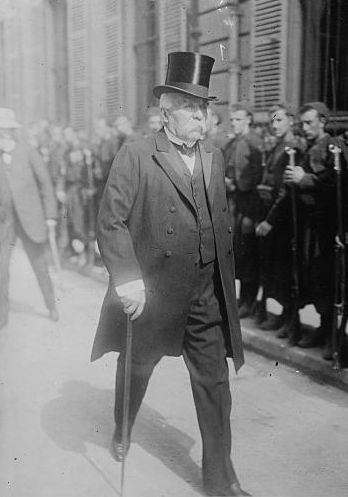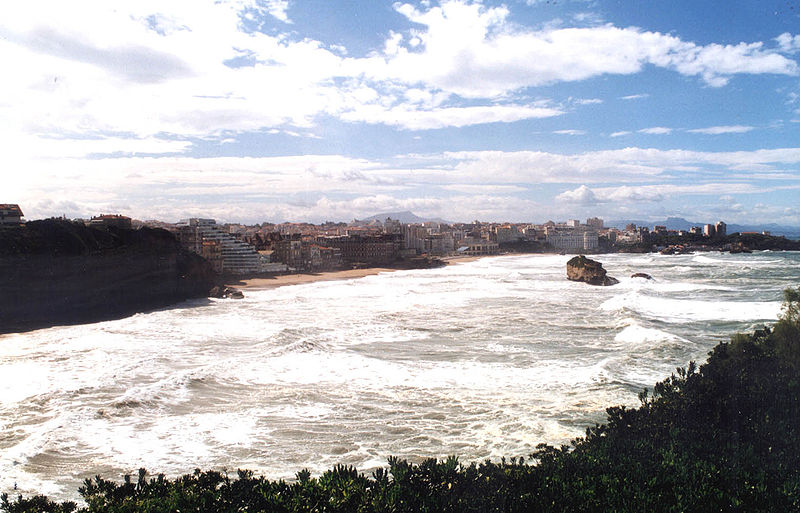|
Pierre-Barthélemy Gheusi
Pierre-Barthélemy Gheusi, also known by the pseudonym Norbert Lorédan, (21 November 1865 – 30 January 1943) was a French theatre director, librettist, journalist and writer. He was born in Toulouse and died in Paris. Biography A son of a banker and distant cousin of Gambetta, Pierre-Barthélemy Gheusi studied at the college in Castres, where he met Jean Jaurès, who was at that time a tutor there, and became a friend of the doctor and scholar François de Vesian. He went to study law in Toulouse. In 1887–1888, at the instigation of Laurent Tailhade, Gheusi worked on the revue ''Le Décadent'', but his literary career struggled to take off, despite the recommendations of Émile Zola and Catulle Mendès. Gheusi was involved in republican politics and joined the electoral campaign of Jaurès in the legislative elections of 1889 in Castres. In the following years, the government called on his services from time to time. In 1897, Ernest Constans sent him on an inspection ... [...More Info...] [...Related Items...] OR: [Wikipedia] [Google] [Baidu] |
Eglise Gnostique Catholique
The Gnostic Church of France () is a neo-Gnostic Christian organisation formed by Jules Doinel in 1890, in France. It is the first Gnostic church in modern times. History The esoteric Freemason Jules Doinel, while working as archivist for the library of Orléans in France, discovered a medieval manuscript dated 1022, which had been written by Stephen, a canon of the Orléans Cathedral, burned at the stake in 1022 for his pre-Cathar Gnostic doctrines (see Orléans heresy). Doinel founded the Gnostic Church in 1890, a date which opened for him and his followers 'the first year of the Restoration of Gnosis'. Doinel claimed that he had a vision in which the Aeon Jesus appeared, He charged Doinel with the work of establishing a new church. When Doinel attended a séance in the oratory of the Countess of Caithness, it appears that the disembodied spirits of ancient Albigensians, joined by a heavenly voice, laid spiritual hands on Doinel, creating him the bishop of the Gnostic ... [...More Info...] [...Related Items...] OR: [Wikipedia] [Google] [Baidu] |
Théâtre Du Vaudeville
The Théâtre du Vaudeville () was a theatre company in Paris. It opened on 12 January 1792 on rue de Chartres. Its directors, Pierre-Antoine-Augustin de Piis, Piis and Yves Barré, Barré, mainly put on "petites pièces mêlées de couplets sur des airs connus", including Comédie en vaudeville, vaudevilles. After the theatre on the rue de Chartres burned down in 1838, the Vaudeville temporarily based itself on boulevard de Bonne-Nouvelle before in 1841 setting up in the Salle de la Bourse on the Place de la Palais Brongniart, Bourse in the 2nd arrondissement of Paris, 2e arrondissement. This building was demolished in 1869. Eugène Labiche and Henri Meilhac put on several of their works there, and it also hosted Jules Verne's play ''Onze jours de siège'' (1861). Other writers whose works were put on there were Edmond Gondinet, Alexandre Bisson, Théophile Marion Dumersan, Jean-François Bayard, Narcisse Fournier and Gaston Arman de Caillavet. In 1852, ''La Dame aux camél ... [...More Info...] [...Related Items...] OR: [Wikipedia] [Google] [Baidu] |
Georges Clemenceau
Georges Benjamin Clemenceau (28 September 1841 – 24 November 1929) was a French statesman who was Prime Minister of France from 1906 to 1909 and again from 1917 until 1920. A physician turned journalist, he played a central role in the politics of the French Third Republic, Third Republic, particularly amid the end of the First World War. He was a key figure of the Independent Radicals, advocating for the separation of church and state, as well as the amnesty of the Communards exiled to New Caledonia. After about 1,400,000 French soldiers were killed between the Schlieffen Plan, German invasion and Armistice of 11 November 1918, Armistice, he demanded a total victory over the German Empire. Clemenceau stood for reparations, a transfer of colonies, strict rules to prevent a rearming process, as well as the restitution of Alsace–Lorraine, which had been annexed to Germany in 1871. He achieved these goals through the Treaty of Versailles signed at the Paris Peace Conferen ... [...More Info...] [...Related Items...] OR: [Wikipedia] [Google] [Baidu] |
Vincent Isola
Vincent Isola (24 July 1862 in Blida, Algeria – 31 August 1947 in Paris) was a French theatre director. Along with his older brother Émile Isola with whose life and career he was closely involved, he was a conjurer and theatre director in Paris; they were known as the Frères Isola – the Isola Brothers. Biography Born in Algeria of Italian parents, Vincent Isola arrived in Paris in 1880, and with his brother undertook a variety of jobs before they first showed their conjuring act in public. They acquired the Théâtre des Capucines in 1892 and renamed it Théâtre Isola attracting large audiences. At the end of 1895, the Isola brothers discovered the invention of the Frères Lumière, cinematography, and devised a projector called ''Isolatographe'' for which the films were provided by another pair of brothers, Frères Emile and Charles Pathé. By colouration of the films they were able to show ‘colour films’ at the Théâtre Isola. In 1897, they bought the Parisi ... [...More Info...] [...Related Items...] OR: [Wikipedia] [Google] [Baidu] |
Émile Isola
Émile Isola was born on 4 September 1860 in Blida, Algeria and died in Paris on 17 May 1945. Along with his younger brother Vincent Isola with whose life and career he was closely involved, he was a Magic (illusion), conjurer and Impresario, theatre director in Paris; they were known as the Frères Isola – the Isola Brothers. Biography Born in Algeria of Italian parents, Émile Isola arrived in Paris in 1880, and with his brother undertook a variety of jobs before they first showed their conjuring act in public. They acquired the Théâtre des Capucines in 1892 and renamed it Théâtre Isola attracting large audiences. At the end of 1895, the Isola brothers discovered the invention of the Frères Lumière, cinematography, and devised a projector called ''Isolatographe'' for which the films were provided by another pair of brothers, Charles Pathé, Frères Emile and Charles Pathé. By colouration of the films they were able to show 'colour films' at the Théâtre Isola. In 1897, ... [...More Info...] [...Related Items...] OR: [Wikipedia] [Google] [Baidu] |
Opéra-Comique
The Opéra-Comique () is a Paris opera company which was founded around 1714 by some of the popular Théâtre de la foire, theatres of the Parisian fairs. In 1762 the company was merged with – and for a time took the name of – its chief rival, the Comédie-Italienne at the Hôtel de Bourgogne (theatre), Hôtel de Bourgogne. It was also called the Théâtre-Italien up to about 1793, when it again became most commonly known as the Opéra-Comique. Today the company's official name is Théâtre national de l'Opéra-Comique, and its theatre, with a capacity of around 1,248 seats, sometimes referred to as the Salle Favart (the third on this site), is located at Place Boïeldieu in the 2nd arrondissement of Paris, not far from the Palais Garnier, one of the theatres of the Paris Opéra. The musicians and others associated with the Opéra-Comique have made important contributions to operatic history and tradition in France and to French opera. Its current mission is to reconnect with ... [...More Info...] [...Related Items...] OR: [Wikipedia] [Google] [Baidu] |
Opéra National De Paris
The Paris Opera ( ) is the primary opera and ballet company of France. It was founded in 1669 by Louis XIV as the , and shortly thereafter was placed under the leadership of Jean-Baptiste Lully and officially renamed the , but continued to be known more simply as the . Classical ballet as it is known today arose within the Paris Opera as the Paris Opera Ballet and has remained an integral and important part of the company. Currently called the , it mainly produces operas at its modern 2,723-seat theatre Opéra Bastille which opened in 1989, and ballets and some classical operas at the older 1,979-seat Palais Garnier which opened in 1875. Small scale and contemporary works are also staged in the 500-seat Amphitheatre under the Opéra Bastille. The company's annual budget is in the order of 200 million euros, of which €100M come from the French state and €70M from box office receipts. With this money, the company runs the two houses and supports a large permanent staff, w ... [...More Info...] [...Related Items...] OR: [Wikipedia] [Google] [Baidu] |
Gallieni
Joseph Simon Gallieni (24 April 1849 – 27 May 1916) was a French military officer, active for most of his career as a military commander and administrator in the French colonies where he wrote several books on colonial affairs. He was recalled from retirement at the beginning of the First World War. As Military Governor of Paris he played an important role in the First Battle of the Marne, when Maunoury's Sixth Army, which was under his command, attacked the German west flank. A small portion of its strength was rushed to the front in commandeered Paris taxicabs. From October 1915 he served as Minister of War, resigning from that post in March 1916 after criticizing the performance of the French Commander-in-Chief, Joseph Joffre (formerly his subordinate, earlier in their careers), during the German attack on Verdun. He died later that year and was made Marshal of France posthumously in 1921. Early life and career Gallieni was born in 1849 at Saint-Béat, in the dep ... [...More Info...] [...Related Items...] OR: [Wikipedia] [Google] [Baidu] |
First World War
World War I or the First World War (28 July 1914 – 11 November 1918), also known as the Great War, was a World war, global conflict between two coalitions: the Allies of World War I, Allies (or Entente) and the Central Powers. Fighting took place mainly in European theatre of World War I, Europe and the Middle Eastern theatre of World War I, Middle East, as well as in parts of African theatre of World War I, Africa and the Asian and Pacific theatre of World War I, Asia-Pacific, and in Europe was characterised by trench warfare; the widespread use of Artillery of World War I, artillery, machine guns, and Chemical weapons in World War I, chemical weapons (gas); and the introductions of Tanks in World War I, tanks and Aviation in World War I, aircraft. World War I was one of the List of wars by death toll, deadliest conflicts in history, resulting in an estimated World War I casualties, 10 million military dead and more than 20 million wounded, plus some 10 million civilian de ... [...More Info...] [...Related Items...] OR: [Wikipedia] [Google] [Baidu] |
Biarritz
Biarritz ( , , , ; also spelled ; ) is a city on the Bay of Biscay, on the Atlantic coast in the Pyrénées-Atlantiques department in the French Basque Country in southwestern France. It is located from the border with Spain. It is a luxurious seaside tourist destination known for the Hôtel du Palais (originally built for the Empress Eugénie ), its seafront casinos, and its surfing culture. Geography Biarritz is located in the Pyrénées-Atlantiques department in the Nouvelle-Aquitaine region. It is part of the arrondissement of Bayonne, adjacent to Bayonne and Anglet and from the border with Spain. The city is also in the traditional province of Labourd in the French Basque Country. Climate Biarritz has a temperate oceanic climate, Cfb in the Köppen climate classification. It is one of the wettest cities in Metropolitan France. Etymology In Basque, its name is Biarritz or Miarritze. Its current Gascon name is Biàrrits. The name for an inhabitant of the ci ... [...More Info...] [...Related Items...] OR: [Wikipedia] [Google] [Baidu] |


